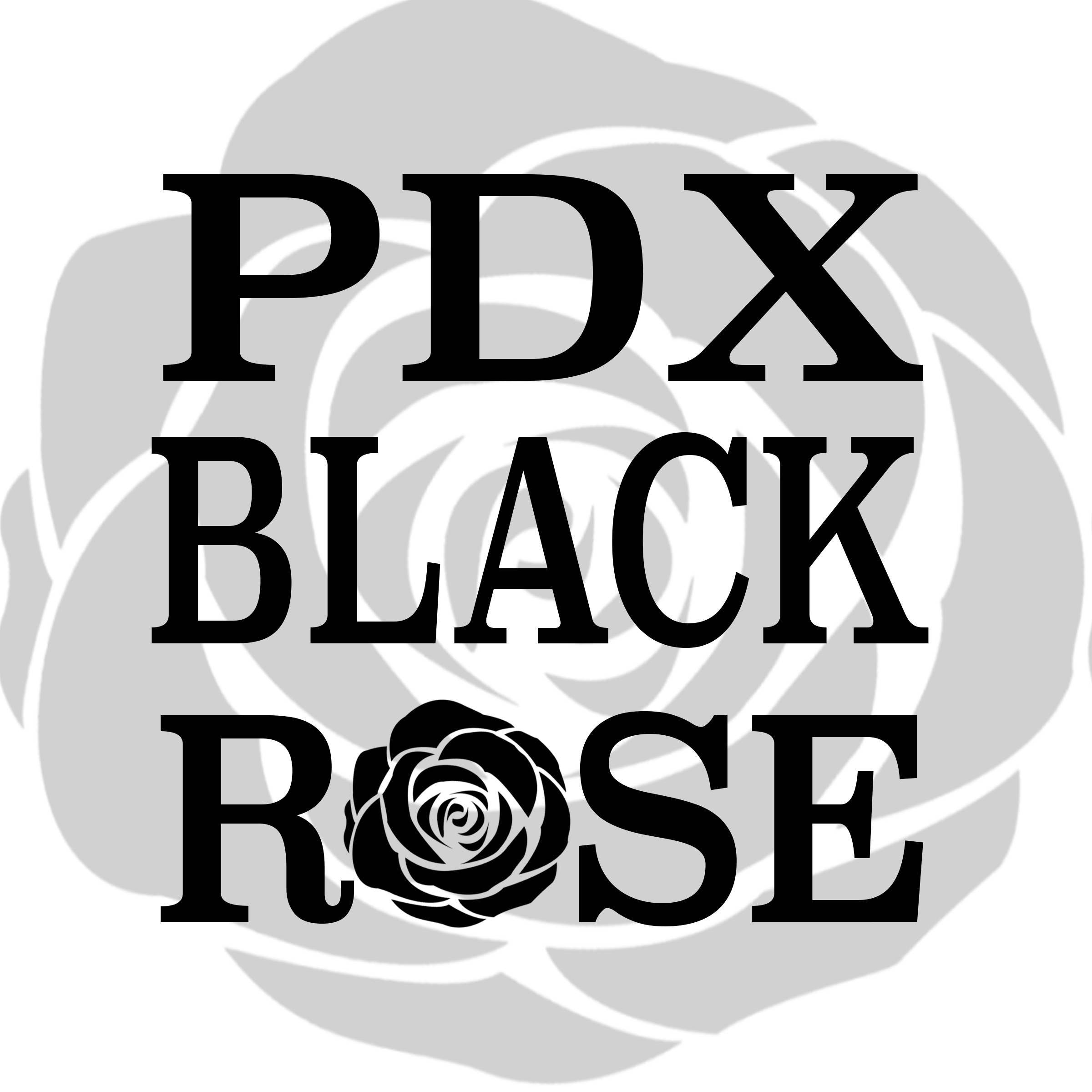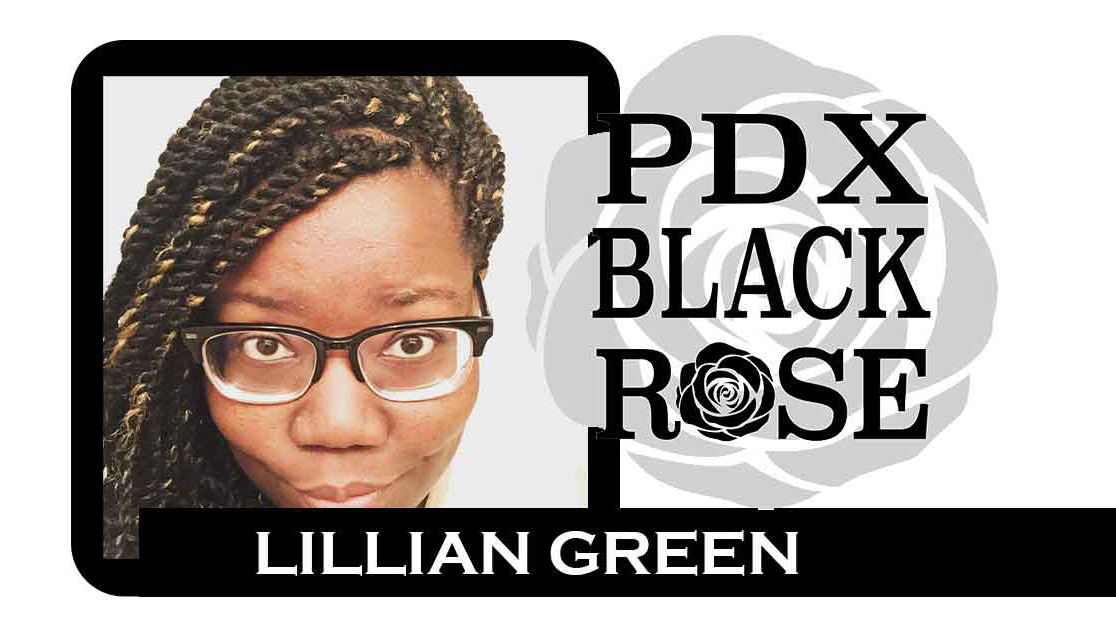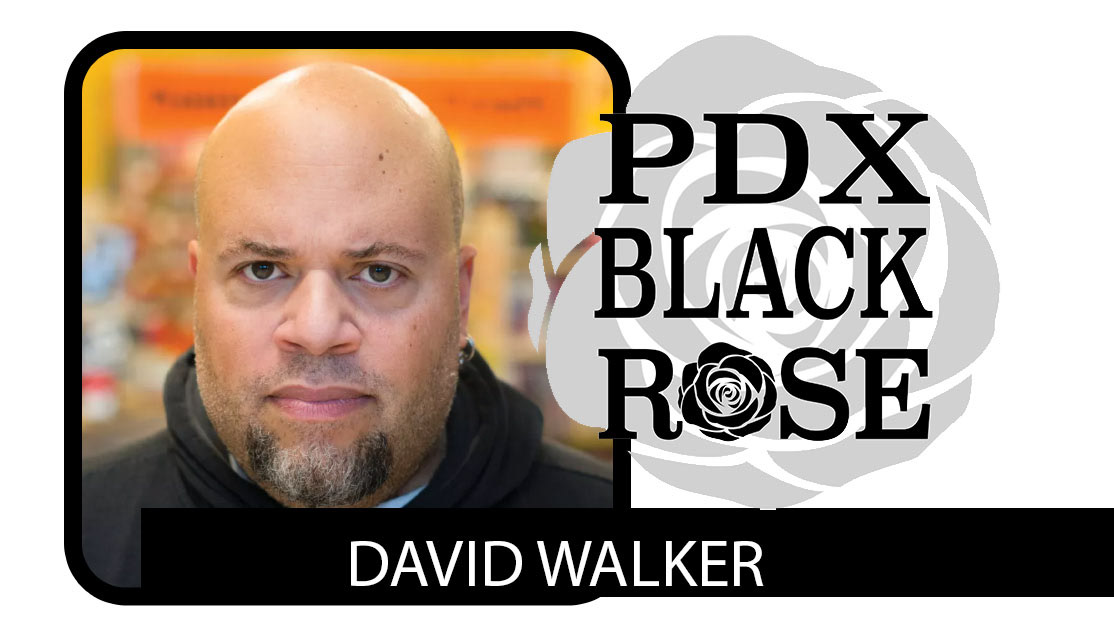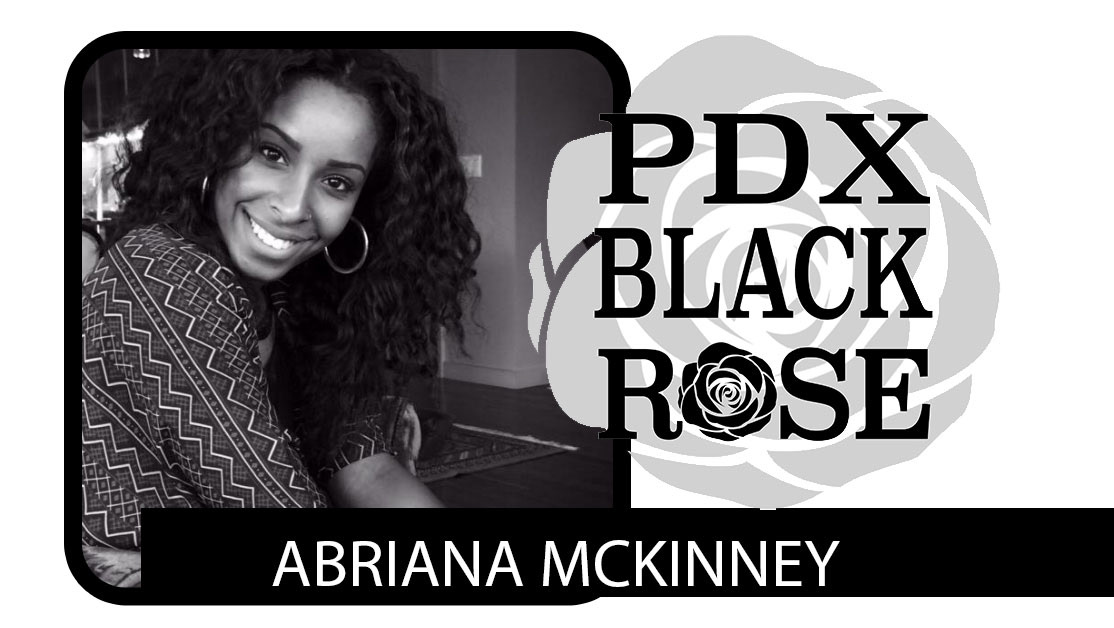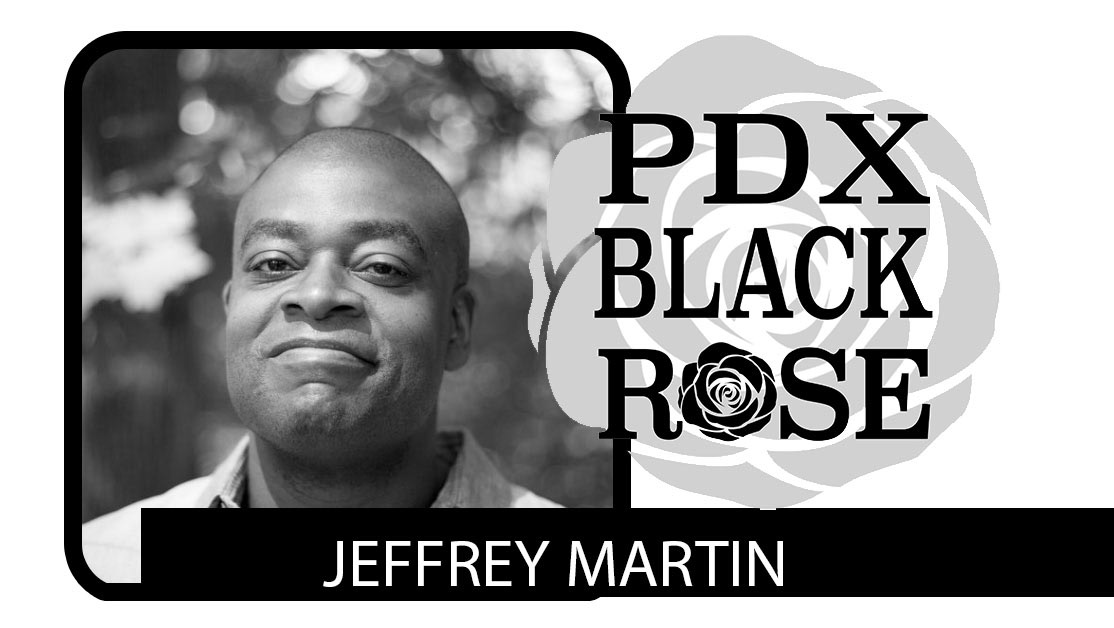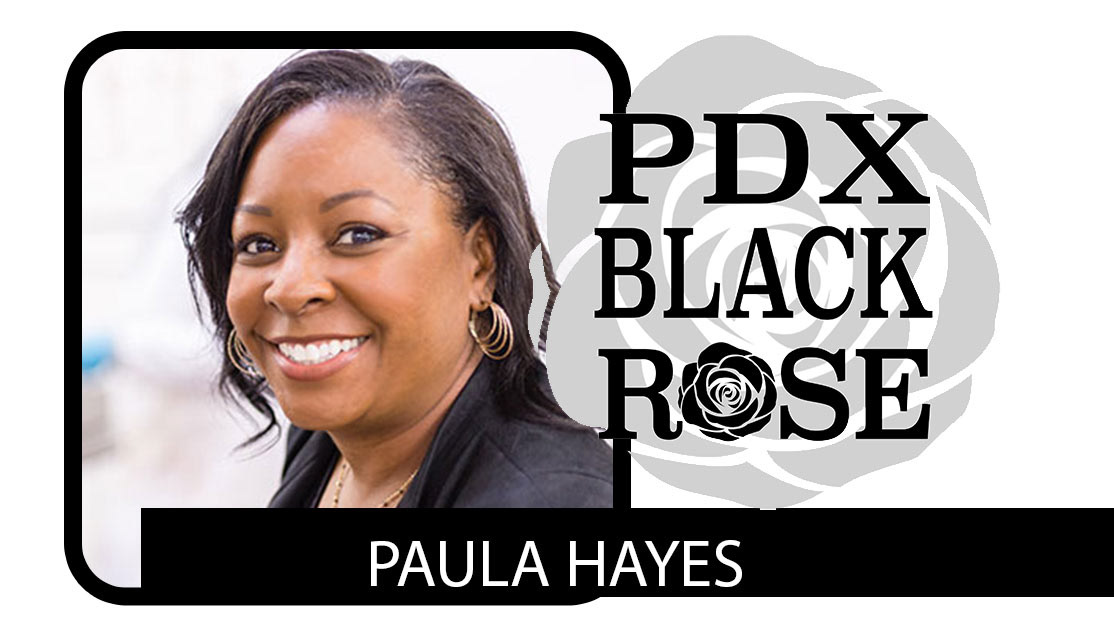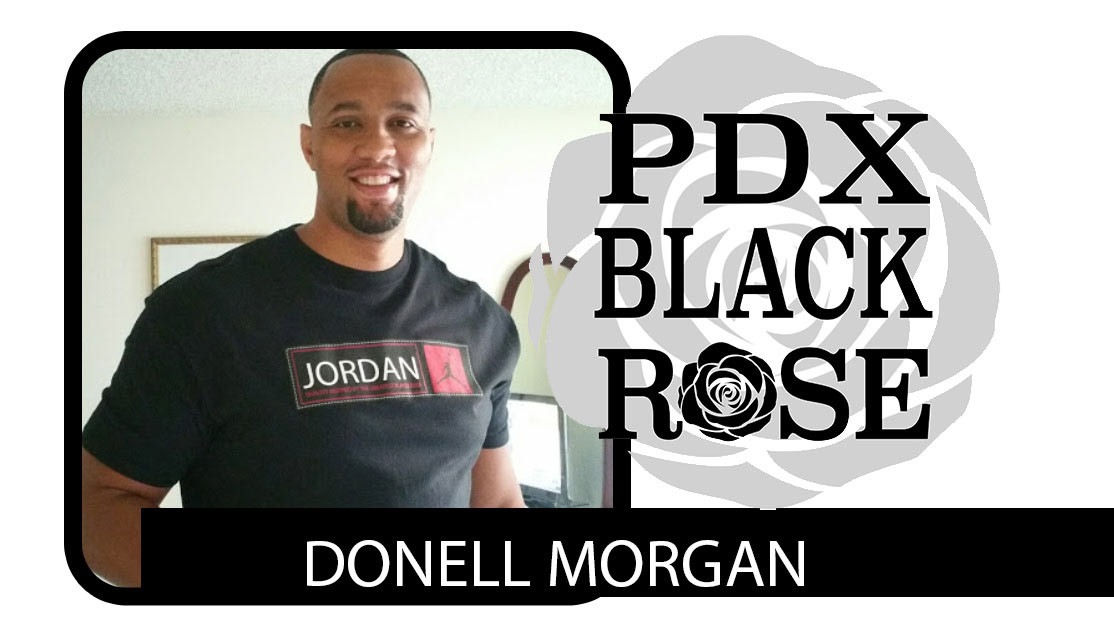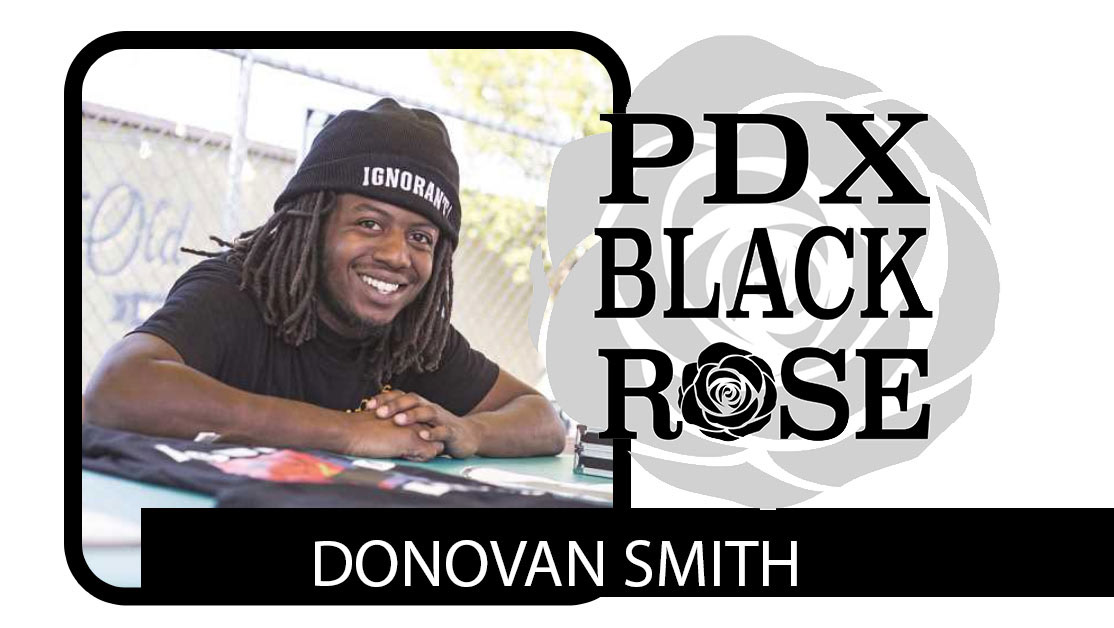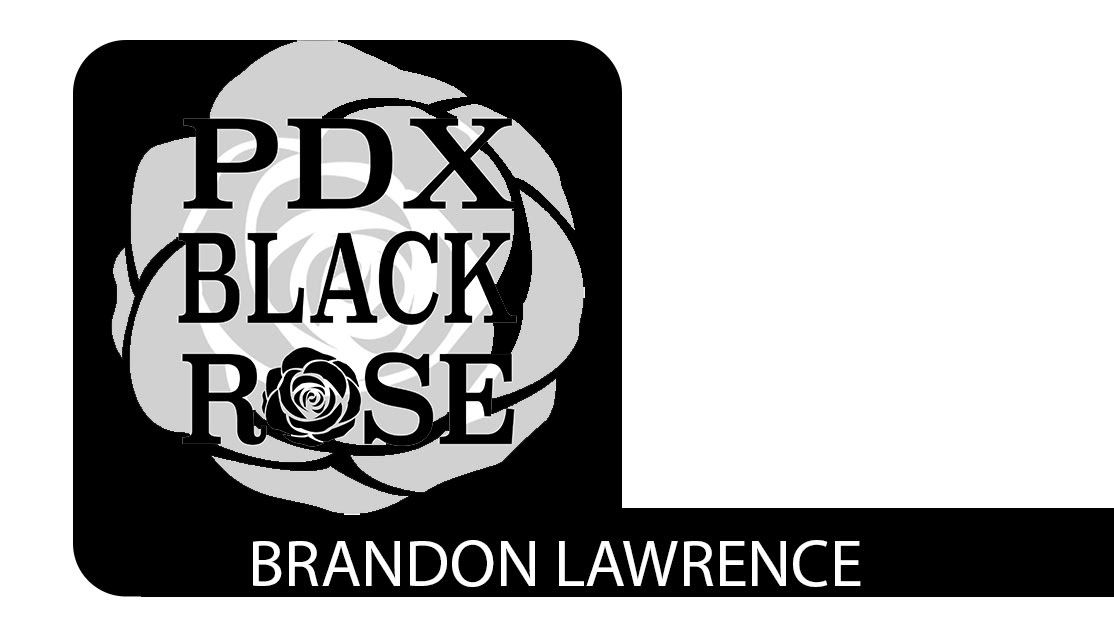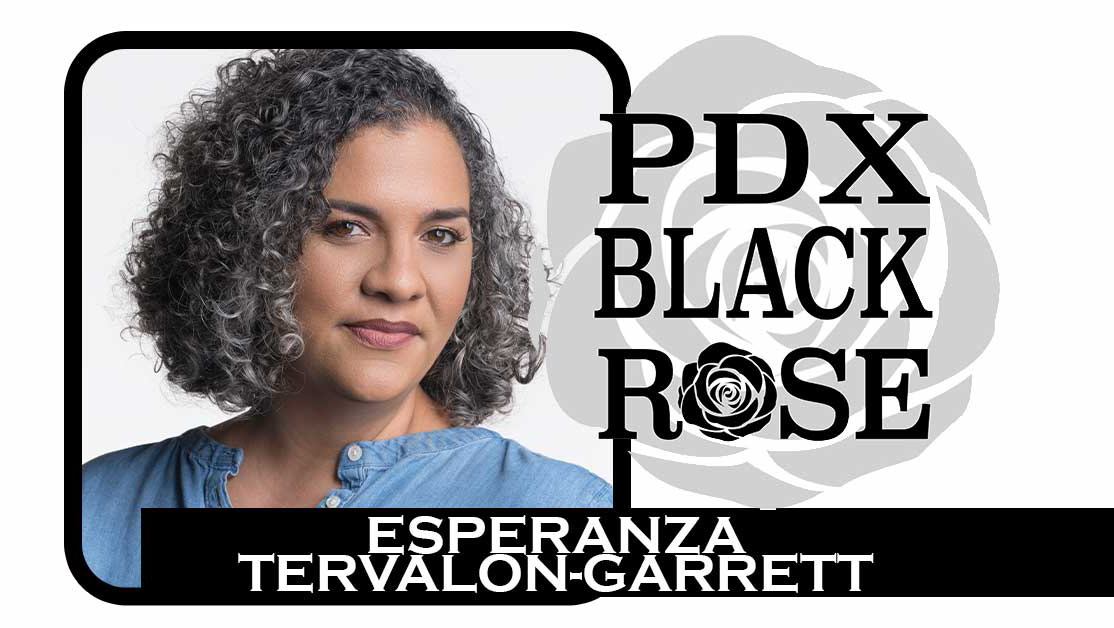Maurice Rahming or O’Niel Construction Group joins us for an in-depth chat about being a Black business owner in Portland’s construction industry. With all the developments and funding in the area, he shares his experiences with Racism, discrimination, and expansion. Coming from New England, Maurice was introduced to construction at an early age. He worked his way up to the top of his field with laser focus to create a better life for himself and his family. His modest upbringing gave him the focus and drive to prioritize his career over everything else. With his laundry list of credentials, Maurice began making a splash in Portland because not only was he skilled at what he does, but he was qualified, and he was a Black Business Owner. With Portland’s rough history of acceptance and equity for people of color, Maurice found his niche.
He uses his platform to bring others up with him.
Maurice has been in Portland since the early 90’s and he did a lot of research prior to coming. It was his wife’s idea, but they saw opportunities in the market that gave them hope of growth. Yet, a black family moving to Portland, Oregon comes with its obstacles. Often many of the problems have a racial component that looms over his head like a haunting spirit. There was a narrative that people of color were both struggling because of lack of opportunities and education yet flourishing because of affirmative action and diversity initiative. Maurice was not seeing the later as often as the former. Within the construction industry specifically, he was experiencing many of the problems that plagued black people trying to do the right thing with the skills they had. Many of the overt and covert barriers that majority counterparts were not aware of and did not experience.
As he progressed and his business began to grow, he found the drive to give back as soon as he could. This came in the form or one-on-one mentorship. Over 10 years, he worked with other black people and minorities to break into the construction industry and navigate many of the obstacles he faced on his journey. Much like a teacher seeing their students graduate to other things, Maurice felt pride witnessing the evolution of his mentees. This led to an expansive effort beyond helping one person at a time. He wanted to help a whole generation. With billions of dollars being invest into new projects and the workforce shrinking, Maurice has championed the need for more people of color in these vacant roles. He has been a vocal advocate for improving not only the way people are hired, but also the way success and productivity is measured. He takes it upon himself to manage hold organizations accountable because they preach diversity, but quite often their numbers don’t reflect it.
Notes from the Conversation
He and his wife traveled to Portland after living in Texas. He is originally from New England but has been in Portland for over 20 years. They wanted to live on the west coast, and in the 90s the most affordable area was Portland. His was really the driving force behind settling in Northeast Portland. She is an avid researcher, and she wanted to move to a place that she felt comfortable at. With the large demographic of people of color, NE was an ideal location. Its’ crazy because the place he moved to for diversity has now been gentrified and he is the only black house on the block. He noticed that people were moving out over time, and he was really interested in why.
When he first moved in, he gravitated to the mall because it was a great place to walk around and be around black people. He did notice when he walked around that the “nod” was not universally acknowledged from the native Black people. It was off putting for Maurice coming from Texas and New England because he was used to the constant conversations and acknowledgment for other Black people navigating the same way he is.
For his white peers, the idea of the nod is foreign. He describes being in a group of white peers and giving the nod to a black person that is walking by. They would ask him if he knew the person, and to their surprise he would say no. They questioned and did not understand. For black people to nod are random black people walking by is to acknowledge their blackness and show solidarity for the constant struggle of being black in often white space. It’s a way of saying, “I see you. Even if I don’t know you.”
—-
Portland has institutionalized racism. He notes that in Texas there were specific places that Black people were relegated to, but in Portland, there doesn’t seem to be any place Black people can go to gather together. He feels that the lack of spaces hinders Black people from forming communities and sharing culture. He says they have done a great job trying to separate the Black people in Portland because there is no place where the Black people explicitly take pride in distinction. In Texas, no one ever says they are a “Black Texan,” but in Portland many people say they are “Black Portlanders.” Most black people say, “I’m Black.” Even though we are all a part of the same group, but they do a good job dividing the group up.
Maurice notices that the narrative people have about the struggle of people of color is controlled. To him, the struggle is the same for the African Immigrant as it is for the Black person, but for some reason, people will act as if the struggles are totally different then majority culture will then pick and choose who the winner is. This will pit the Immigrant community against the Black community as if there is a limited amount of resources. The reality is that there are much more resources, but the majority culture is only providing 1% of those resources. Even though providing 2% would cover everybody, the idea of pitting groups against each other and deciding which group gets what has more of an incentive. Maurice feels that as a community, we should all come together and ask for more of the pie instead of sharing a sliver of a pie slice.
—–
Growing up as one of 7 kids to a single mother, Maurice understood his reality early on. He understood that some opportunities were not a luxury for him. He was fortunate enough to get into the profession that he is in and be successful. Never forgetting where he came from, he began looking for ways to bring other people up with him. He looks for community projects that will help people of color push forward like many opportunities that got him started.
There are a lot of construction project in Portland, and Maurice looks for ways to propel Black people and give them opportunities. Often when you see a construction project, a black person is usually holding a flag, a shovel, or a broom. Maurice prides himself on trying to get black people is more well-paid jobs rather than being relegated to the help. He looks at how equity is across all areas of construction from plumbing to electrical. He looks for ways to keep the City and major players accountable so that people of color have access to opportunities.
When Maurice sits on boards, he tries to find ways to get the available resources and opportunities in the hands of Black people who are often the ones that truly need it and are the most impacted. Quite often he deals with parties that try to water down the effort by including everybody. Not to say that one is better than the other, but when you disaggregate all the different communities, you see which ones are greatly impacted. An example is that entities will set goals of reaching 20% of marginalized communities. Even if 0% of the communities benefits are Black, they will see that as a success because the goals were vague and unclear. Maurice tries to peel back those onion layers and see what is really going on.
—–
Maurice owns O’Neil construction group. His last name is Rahming not O’Neil. When he moved to Portland, he understood that there is racism in construction. He named the company after his wife’s maiden name because he wanted people to contract with him. Unsurprising to him, that choice was working out in his benefit because people were boasting about how it was a good Irish name, etc. At some point, clients kept asking when they were going to meet Mr. O’Neil. They have been giving them money for years but never met the owner. He explained that he was Mr. O’Neil. That was the last contract that they got from those clients. He laughs that that is part of the reality. He says that the challenge isn’t doing the work, it is working within the realities that you are in. The real challenge he finds is how to push people through the system knowing what the realities are.
Early on he realized that the path he was on was a pathway out of poverty. He began collecting as many credentials and licenses as he could as quickly as possible. He earned the highest license possible before he hit 30-years old. He was the youngers person to have their supervisor’s license and inspector’s license at the time. He did that intentionally because every time he would walk into a room people would wonder if he was qualified. It got to a point where there was no other possible test he could take in the state. He passed them all and passed them the first time, yet he was constantly being challenged and had to prove that he was worthy of that seat at the table.
When people who have less credentials than you question if you are qualified to be in the room, the first thing people often do is get upset. When you do get upset then they label you an angry Black man. As a result, you end up in a tough situation. You are damned if you do, and damned if you don’t. For Maurice, it has been very difficult, but he learned that as long as he stuck to it, they eventually could not deny that he could do the work. From those experiences, he now has the opportunity to mentor and give other the intellectual property they need to push past the same obstacle. He understands that people have to know how to do the work and prove they can do it, but when the racism and discrimination happens (because it will) he wants to provide that support.
Navigating the industry, he is in can be difficult because the standards are not equitable. Clients that are often good with 80% make look are your 99% and put that 1% under a microscope to magnify it. Working twice as hard to get half as far is very real, and it can take a toll over time. Despite the adversity in front of him, his competitive nature always prevailed. He always had something to prove because there was always someone doubting his ability. He attributes it to a suborn persistence that he inherited from his mother. He does everything on his own terms.
Now that is in a better spot. People are familiar with his company. He wonders where the other people of color are. To fill the need to create an environment that other people need to be successful, he put together a training center with the Professional Business Development Group that helps smaller contractors get the raining they need to become successful. He feels that it is easy to deny 2 or 3 qualified individuals, but when it is 50 or 60 individuals being denied the discriminations and racism lens gets bigger and bigger to the point where then can’t hid from it or ignore it.
His main goal over the next 10 years is to see:
How he can get people that are interested in the industry in the industry?
How can they get them high paying jobs?
how can they turn those jobs into contracting?
How can they ensure that they are successful in their contracting?
How can they continue scaling?
He sees good examples in other states, but not here in Portland
—–
He started his journey back in high school. There was a federally funded program where students could study electrical engineering, plumbing, and other trades. His instructor in the program was Master Electrician, Mr. Wahl. Mr. Wahl was a key figure in Maurice’s life because he was the first white teacher to encourage him to pursue what he was actually good at rather than steer him down a stereotypical path. Typically, with Maurice, white teachers would see his black features and would direct him to a particular pathway because that was what was expected of black people at the time. Mr. Wahl on the other hand express how good Maurice was, and gave Maurice the spark to succeed further. Mr. Wahl didn’t think he was good. He thought Maurice was the best person in the class. Mr. Wahl was that initial figure that pushed early on because he didn’t look at Maurice and limit him. That drove him to get through apprenticeship program, knocking obstacles out of the park.
He started his company a 1-2 years after moving to Portland. He needed to complete a list of tests and show enough hours in the trade. He got his supervisors license to ensure that he can open up a company. Since he was in a test mindset, he also decided to get other credentials. He was driven by the notion that the more tests he passed, the less likely he is to have people question his qualifications.
He started early on in his career gaining credentials. 20 years ago, the market was not as competitive. This made it easier for contractors to get grounded and start moving the business. There is a lot of required paperwork and “soft” barriers that hinder progress now compared to when he started. Those “soft” barriers are often understated and underestimated. It is a lot easier for multi-million-dollar companies to pay initial fees than a startup. Startups usually don’t have the resources, the manpower, the financing, or the luxury of taking off of work to prepare for tests like financially stable institutions. In that pursuit, startups are spread then before they even get started. A lot of the upfront costs come from software. Most are on subscription bases so they must buy it in order to use it. That can easily run them $70,000 a year. What smaller firms have to deal with is either buying the software and hiring less people or having more people, but not having the software to work. The software is a “requirement” so those who cannot pay cannot play. This alienates those who can’t regardless of skillset.
What constitutes software that cost more than most people’s yearly income? A lot of it is estimating software. If you have a good estimating software, you are doing onscreen takeoffs. There is design software such as Autodesk Revit and AutoCAD. There is building informational modeling software such as Navworks. Not only are you worrying about the software, but also the training for the software. Quite often the tools required have steep learning curves that hinder the productivity of a user if they do not know how to navigate it. Idea of required software is actually a combination of different software suites from competing companies that are widely used in the industry.
The way the industry is setup, software with a high barrier of entry becomes a standard, and that standard isolates newcomers because they are put at a disadvantage in the market. Now that the industry is moving towards SMART technology, that means more integrated systems. The integrated systems require more software to function. That makes the requirements to succeed in the industry steeper because a smart building with smart thermostats and energy efficient appliances requires extra tools and resources to setup and upkeep.
To give an example of how the industry works:
A new standard is set in the industry
There is a whole suite of training manuals
There’s more certifications
More requirements
All this to compete with others. Those who can’t afford it are often left behind. That is the unfortunate reality of modernization. It comes at a price of people, time, and resources. Those intersections always screw those that are in the margins.
—–
With software, people often don’t have the use it every day. There are instances where companies need a particular software on a project. Yet, companies only use a software one time a month. They still have to pay $4,000 a year to keep it updated. What Maurice is look into with his training centers is finding different ways to provide access to the software. If there is a large population that only need it once a month, they can make that investment to serve a list of people. Maurice isn’t trying to break the barriers; he is trying to create ladders to get over the barriers. He can attest to the fact that breaking barriers does not always work. Quite often more barriers are erected, and those barriers are steeper than the previous ones.
This leads one to ask whether the push for diversity in the industry is benefitted by the increase in technology and environmental consciousness. On one hand, technology increases access to tools and information that people who were otherwise shunned from participating to actually participate. We are helping the environment by using technology to create structures that minimize our carbon footprint. On the other hand, the requirements to enter the industry become steeper and technology is creating more barriers that indirectly block those from getting in. Understanding the lack of resources and support black people have already, being able to compete in an industry that has such steep requirements can often perpetuate those disparities even more regardless of whether the individuals have skills and credentials.
—–
Maurice was driven to give back to his community because he noticed over the years that government institutions are great at creating programs but are not good at measuring the success of the programs. Quite often they will mention status they are achieving, but not follow up with it. So, he wanted to change those priorities that would continue to neglect the numbers.
As a working professional, he knows that there will be a point in which he will want to do philanthropy. He doesn’t want to wait for that moment thought. He would rather start giving back now that way he could start seeing the outcomes while he is still alive. He doesn’t want to be pushing 70 or 80 to see his hard work pay off for others. He has helped out several businesses in that past and seen them grow, and he likes the feeling that comes with helping make a difference for others. He appreciates hearing how influential he was in the journey of others success. It is a feeling that money can’t buy for him.
He has helped others out on a one on one basis for 10+ years, but after a while he wondered if he could do much more. With everything going on, he didn’t feel the need to wait for the city or state to act on his mission. For him it is about acting now. Mr. Wahl showed Maurice that he didn’t have limits on his future, and he took that and ran with it. Now Maurice is in the business of doing that for others. That is hugely rewarding for him. Especially when he sees other people doing the same thing. It is contagious.
—–
When you look at sports, entertainment, tech, and any other industry where black people are making stride, there is an expectation for the black people in that space to pave the way for other to follow. When a black person doesn’t do that, i.e. Michael Jordan who just left, they get cultural flack for it. It becomes an expectation that black people who have success want to bring people up with them. That in and of itself is reflective of the black experience. On the flipside, if a black person does not pave a path, they are considered a sellout. They aren’t doing what they are supposed to be doing. The dynamic is interesting because other communities often do not have to deal with that.
Maurice is always challenging himself and asking what the diversity of his workforce looks like. He never wants to have a situation or project where there are no black people on the jobsite. Those intentions are a big deal for him. When he first got started, he made it a point to push for particular individuals to get their foot in the door. Even though he was just a small business that couldn’t always hire year-round, he would advocate on their behalf. That makes a difference because other companies will give them opportunities to showcase their work. It becomes a domino affect that takes the already great skillset and work ethic to the next level. That is the power of opening doors. It creates opportunities that change lives.
The advocacy that Maurice does is contagious. Pressing the issue of jobsites not having black people makes others hyper aware of it. The well-meaning business owners who want to increase diversity, but don’t know how reach out to him to find solutions. The diligence with the advocacy work he does quite often pushes the needle forward, and ultimately leads to changes in how the industry looks. In training centers that rarely saw black people now have seats filled with hungry black workers.
—–
Maurice really thinks black people should look into the construction and contracting trades. There are a lot of will paying jobs. Maurice’s big way of giving back is exposing black people to his profession and showing them that they can work
—–
There are many times where Maurice tries to open doors for others and advocate for diversity, but the market doesn’t align with his desires. Even though he owns a business, sometimes he can’t hire people because he doesn’t have any work for them. The challenge is that the business needs to keep going in order to create opportunities. Finding that balance between doing good and making money is key. Interestingly enough, it isn’t hard to do both at the same time. For Maurice, building up the competition and opening doors for other Black people in the industry is a mission and also a safety net. For whatever reason, if Maurice fails to hit his business marks, he hopes others would want him on their team. He doesn’t see competition as a negative thing that needs to be sink or swim. He sees it as a driving force of the market that is comprised of a small community of individuals working towards the same goals in their own respective ways.
Maurice doesn’t want to see his competition fail, and he hopes they don’t want to see him fail. That gives him the peace of mind to keep pushing forwards. Even if he makes a mistake along the way, there will be someone or something there to help him rebound.
That is the blessing of a for profit company. Having the flexibility and freedom to do good in the world without having to make compromises for money. A product or service can drive the revenue needed to create opportunities. This allows missions to be driven by market demand. On the flipside, if the business is not going well and the market is not there for the product of service, you can’t give back the way you want to because there is no support. The risk is higher for a for profit company, but the reward is also much higher because they do not have to water down their mission to make waves in society.
Maurice does not envy nonprofits in this respect because he appreciates the flexibility of taking strong approaches to his advocacy. He has often called out entities in the name of diversity with the peace of mind that the business he loses as a result can be filled with other sources. A nonprofit can’t do that. It is much harder to replace funding sources and get money back that they lose as a result of certain actions. The financial hit is more massive because they fundraise in the same space, they try to enact change. It is the antithesis of how our economy works because nonprofits can’t compete in a free market. They need to make compromises to survive.
——
It is really easy to be compromised in the space of advocacy when the oppressive players have control. This put nonprofits in a bind because their deviations from the status quo can threaten their existence in the space. Maurice found himself in an interesting position because people were inviting him to be in meeting and sit on boards more and more frequently as he became more of an advocate. He realized that others saw him as an asset because he could say things they couldn’t. He wasn’t worried about losing business based on his advocacy because he had the financial stability to take a stand. Many agencies and entities want to say things, but they don’t want their funding being slashed either. Maurice did not have that problem. He plays by a different set of rules.
What Maurice hope in the future is that there is an avenue for businesses to say something without repercussions. Unfortunately, there is not anything like that available. If they say anything on tv or the radio, they could be met with retaliation. Quite often he will talk with businesses about their low diversity numbers and they will express how much they don’t want to discuss their diversity number in public. Maurice would often be met with bribes to stop pushing the issue. They would offer him more and more projects to try and keep him quiet. After a while he started turning them all down. He has a running joke with his wife about how much in project bribes he turns down every time he tries to keep business accountable. So far, the bribe counter is in the millions.
After turning down 20+ projects, Maurice sat down and asked himself what his limit was. Would it be $20 million or $100 million… He realized that there isn’t a dollar value that would make him compromise. He was raised on so little growing up that he doesn’t need a lot to do the work that he does. He doesn’t need millions of dollars to feel fulfilled. Giving in is not worth what they are offering to sell him. That level of conviction transcends who he is as a person and is injected into everything that he does in life and in business.
—–
If you can’t be bought, then you are respected more. Maurice truly believes that. He chuckles looking back at events he was asked to speak at knowing that the people hosting the events did not want him there but had to have him there because the level of respect Maurice has in the community. Leaving Maurice out will lead people to ask, “why isn’t Maurice here?”
People respect the fact that Maurice will speak truth to power. They might not like it, but they have to have him in the room because it is really noticeable if he is not. With his credentials and his involvement in the community, his impact is felt. This was all done by design.
Maurice has always been vocal and opinionated. It didn’t arise over time. It was always there. He notes that in his advocacy for diversity that not everyone is out to keep Black people down. There are people in place that do, but there may be some people in places that get in the way of progress. The people that do want to help see the institutionalized racism first hand, and they don’t like it. They want to change it, but they don’t know how. If they speak out about it, they are ostracized and not taken seriously.
“Oh, it’s that white guy speaking out about injustices.”
It takes away from the mission. When others speak on it, they are more apt to support them. That is important because
——
Maurice is currently working on Community Benefits Agreements. There are penalties and other things in place for companies that don’t meet specific standards such as equity requirements on projects across trades. The agreement states that they want women and minorities disaggregated on all city projects. They want to make sure that all minority businesses have retail spaces on projects. They want to ensure job opportunities are available that positively affect our community.
There is a lot of construction happening in North/Northeast Portland, but there are not a lot of people of color working those job sites. There are buildings being built, but they are not housing black people despite there being a large population of black people in the area. What a community benefits Agreement says is that they want to see more people of color represented.
They are forcing agencies to express a need for more diversity. They are making sure that any person of color that is working on the job doing electrical, plumbing, etc. are getting paid the same as white workers. Interestingly enough, there is a big push against that effort.
Quite often companies would try to lowball minority contractors into driving their prices down for work they would pay full price to a white contractor for. Since minority contractors have more challenges gaining contracts, companies try to take advantage of that to keep more money in their pockets. This puts minority contractors in a bind because they need to do jobs to pay bills, but they can’t not work.
Maurice often has to challenge policy maker in person because they try to push policy that intentionally harms minorities but will claim that their diversity plan will help mediate the effects. Such a farce. What good is a diversity plan if minorities are being harmed in the process.
The Community Benefits Agreement says that a company must pay at least a certain amount to contractors which is the average wage in Portland. These policymakers want to remove it for arbitrary reasons, but what really happens is that it allows companies to pay minority contractors $10 less an hour than their white counterparts. The minority contractor is going to take it because they need the job, but they are getting screwed.
The criticism of the Community Benefits Agreement argue that it restricts the free market by fixing wages. Not remotely true. The Agreement states that companies must pay the average wage. If they want to pay more, they can. They just can’t pay less. Most black contractors get undercut on jobs, and the Agreement aims to combat that exploitation. The companies know that particular black contractors are good. Yet, they will try to undercut them because they know it is difficult for them to get work. It’s hood robbing. It is taking from the poorest and giving to the wealth. The companies are still charging the same hourly rate to the customer but are then taking that money and lining their own pockets rather than paying the minority contractors they hire. The payed the minority contractor that $10 less an hour but they charged the customer the for price.
When the floor is taking from under everyone, it gives companies the license to manipulate others. They can drive down the price to a few bucks over minimum wage and hold that over their heads as progressive goal based on hard work and loyalty. Companies will say, “If you keep working hard, you will get there.” Knowing damned well that is not the case.
There needs to be wage equity.
—–
The North/Northeast Community Development Initiative is the $32 million through Prosper Portland that was left over from the Urban Renewal District program. Maurice’s goal with this is to see how much of the money he can get in the hands of African Americans. Often policies will say that there is money meant to help the African American, but when you read print, it says “African Americans, low-income community, etc.” The scope become really broad and the effect and impact gets diluted because African Americans are not being helped, everybody is, and there for no one makes true gains. It is disingenuine to claim to specifically help African Americans, but really aren’t.
It is interesting because there was no problem discriminating and singling out Black people, but when it comes to helping black people, they try to help everyone. Somehow entities are now worried about getting sued for discrimination even though they were doing that prior. Maurice would really like to see that happen. He urges companies to “do it once” and see if anything happens. He would love to see the one firm or agency with the white guy saying they are being discriminated against.
They are not actually worried about being sued. It is just a scarecrow tactic used to avoid the conversation. The fact is that no one has tried doing it, so people literally do not know. There are always excuse for why we can’t help. Even if there is a lawsuit, it would garner attention and respect from the community. It shows that they had the backbone to do the right thing. The whole notion is crazy. They can’t do the right thing because they are worried about being challenged. That sounds asinine when you say it out loud.
Maurice is apt to point out the hypocrisy in the arguments companies give. They aren’t worried about people falling off art installations and suing them even though the average person could fall victim. They are totally afraid of something that they don’t know coming out and suing them because they directed $1 million to help out African Americans that were displaced. There isn’t this fear when tax dollars go to covering up Police misconduct, but the gates will open if that money goes to Black people. The whole point is that they could be doing more, and they are not. We as a community are not pushing them as much as we should be pushing them.
—–
Maurice is a big proponent of speaking out more. He feels we should call attention to where our tax dollars go. If they are not going to causes that benefit us, then we need to speak out about it. When large developers get large amounts of money for developments, but nothing comes of it that benefits our community, we need to speak out. They will argue that they can’t give it to the black community to redevelop the community, but they can give it to developers outside the community to “revitalize” the community.
Maurice has worked public actions committees before and he has seen things changed from them, but he notes that it is challenging. He says that you can get them to do the right thing, but it is almost like cattle prodding. You finally get things going in the right direction, but if you turn your back for 30-seconds, then things are all over the place. It puts you in a position of having to be on them 24/7 to make sure they do the right thing. At some point, can there be a time where they stick to the right thing and continue on their own volition.
Ultimately, you must do both: agitate from outside and find a way inside. With persistence, they must work hand and hand to enact change.
—–
Another thing Maurice is working on is C2P2, Construction Careers Pathways. It is a program through the county that takes a regional approach to create career pathways for women and minorities. In the program, there are projects with utilization goals. Once the project is done, they move on to the next job. The goal is to have them churn out enough projects until they become foremen. At that point, they can run their own companies.
Maurice points out that the interesting thing about the program isn’t who signed on to it, but who didn’t sign on to it. Elected officials are generally for making the workforce more diverse. There is a program that literally does just that, and yet there are organizations that are not signing on to it. The C2P2 is addressing equity in construction but is not garnering the support it should be getting from the “proponents” of equity and diversity.
When you ask these institutions why they are not supporting the C2P2, there is a lot of squirming and concerns about being sued. At the end of the day, this is a reflection of “aspirational goals” in the industry. That means the will “try” but they really don’t need to do anything. Action isn’t needed because the system isn’t really broken.
An example of an aspirational goal is: “We have a 40% goal of African Americans and women.” Yet, when you look at the numbers, there is no reflection in the day to day practices. When people say aspirational, it is understood that they are pipe dreams. There is no actual accountability to hit those marks. There are no damages or penalties for not doing it. That is some of the challenges to improving diversity is how institutional it is. Politicians can talk about all the diversity goals they have, but never mention the fine print. They talk all about the project beforehand, but never mention the project after it was done or what marks it hit. This sounds like price fixing and collusion.
—–
A common game being played is that they will claim that 40% of the workers are African American. That is a huge number. They will say there were ten people working on the project. They hired and fired four African Americans. The African Americans probably had 20 hours a piece and the total project required about 2,000 hours. Since their measurement is number of people worked, working an hour allows them to count each person. Since they are counting people, four people is 40%. Anybody looking at the situation would say they should be counting the number of hours not people. It is easy to fudge the numbers.
This is one of many tactics used to mislead people into thinking that black people are getting hired and the money from the projects are getting in the hands of these Black people. When you look at jobsites, the numbers don’t add up. The reality is that there are not a lot of black people working and the money is not going back into the community. This is reflective of the world we live in. The economy is at a record high, and unemployment is the lowest ever, but we are dealing with a student debt crisis, the opioid epidemic, and on the verge of a recession. Numbers are misleading.
Maurice, being a numbers person, suggest more transparency. Accept that utilization is awful. Even if it is at 2%. Own up to it and try to improve on it each year until they get to a particular point. Unfortunately, they will say that utilization is 20% despite the fact that it is a hire and fire situation. Companies will get offended when Maurice points out the inconsistencies. The hard part is actually acknowledging the actual numbers. It perpetuates a narrative that black people are doing better than they actually are.
——
In the name of diversity in Portland. People are not necessarily talking about black people when they are talking about diversity. A good way to clarify what diversity is to clearly define it. What does diversity look like for them? Nine times out of ten when people are talking about diversity, they are talking about urban vs rural. They aren’t even considering that there is an African American that can do a job. Diversity is representative of geography rather than ethnicity. The problem with talking about diversity is that the definitions could be wildly different for some. How can you talk about the need for more women and minorities when that is not the radar? The problem is that the deeper you get into Portland the more you hear about diversity. That is pretty much everyone. Often you have to get people to be more specific with their description.
What Maurice does is try to track the metrics like ethnicity, zip code, and gender. He did that with the city of Portland before and out of the 250,000 hours billed only 46 hours billed by a Black person. Not 46%, but 46 hours. Coincidentally, Maurice had a maintenance job he did for them and that was where the 46 hours came from. He literally was their diversity. Interestingly enough, he introduced them to a new way of looking at the data they had. This showed a different picture of diversity than what they had. They weren’t being misleading intentionally, but the data did not represent the narrative that they are making waves with diversity. Some call it willful ignorance. Others call it sheer oblivion. Being aware of the simple fact that many are actively perpetuating discrimination without any awareness of the ramifications of their actions and inactions. They don’t care unless it is a tragedy that makes headlines. Then there is a rush to save face.
There are opportunity options that are laser focused on providing job opportunities for black people. Many would argue that combating discriminatory practices by giving Black people a justified leg up is grounds for a lawsuit. The argument against the program would go as far as claiming reverse discrimination. They would say “what about the majority demographic that wants to participate in the program? They don’t have the opportunity to.” Opportunities for minorities are already being denied already. How can it be reversed when nothing is being taken away from the majority? There is 100% majority utilization in the workforce and 0% minority but increasing the 0% through laser focused programs is reverse discrimination in their book.
—–
Construction in the Pacific Northwest is a flourishing industry. The market is increasingly eager right now because a lot of people are retiring out of the industry. The average income ranges from $75,000 to $150,000 with full benefits. Without any debt or student loans, this is a good pathway to pursue. Over the next decade, upwards of $8 billion will be invested into new projects in the region. That means there will be work for years to come. The big question is whether or not black people will be able to participate, or will there be people coming from outside the region to participate. The big question is whether we will be watching the city being built and whether we will hold the city accountable for the pending opportunities.
Maurice believes there is a great opportunity to get into construction now than ever before because there is an increase in development and funding, but also a decrease in the workforce due to retirement. The opportunities to work are in a newcomer’s favor. There are thousands and thousands of jobs that need to be filled. They are good paying jobs and that can afford you a comfortable life in a short amount of time.
—–
1:29:42
What to do to combat faux diversity:
Sit in public meetings: You will learn a lot. Maurice has sat in on meetings with development firms that were complaining about only having $7 million of our tax dollars for a project. He appreciates the experience because it allows him to formulate effective talking points.
Look at the disparity studies: The city of Portland and Prosper Portland published studies they did on diversity and inequity. Even though some parts are boring. Parsing through the information allows you to hone in on what your driving arguments are when you are addressing specific issues.
For kids graduating high school consider construction:
There are a series of pre apprentice ship programs they can look at. Some students might need a pre-apprenticeship program and others might not. Programs include Constructing Hope, Oregon Trades Women, Portland Youth Build, POIC, IBW.
Touring facilities and googling different trades yields a lot of information.
Go to O’Neil Construction Group to meet with Maurice about opportunities. He is always looking to help others navigate the system.
They require a high school diploma or GED, but some pre-apprenticeship programs have direct entry into apprenticeship programs.
Once in the program, the pay scale parallels the time spent working. Every six months you get a pay raise. The program encourages working hard and staying with it by rewarding advancement. It is a great opportunity to get a jumpstart on life without the burden of debt.
—–
Credentials get built up to get around those people and barriers.
Key Links:
Twitter – https://twitter.com/mauricerahming
